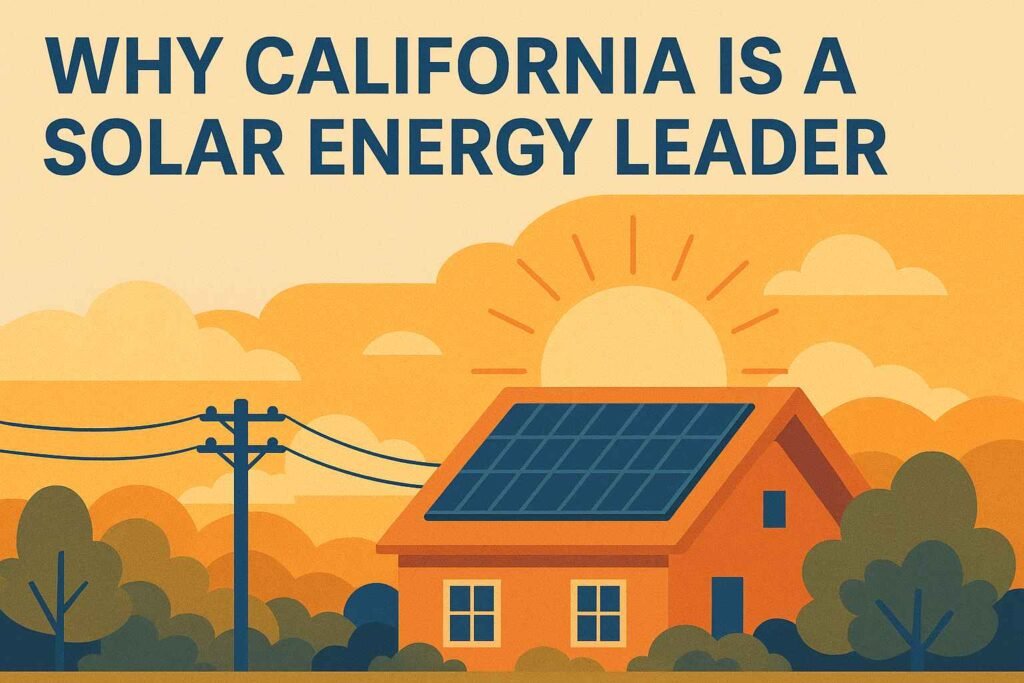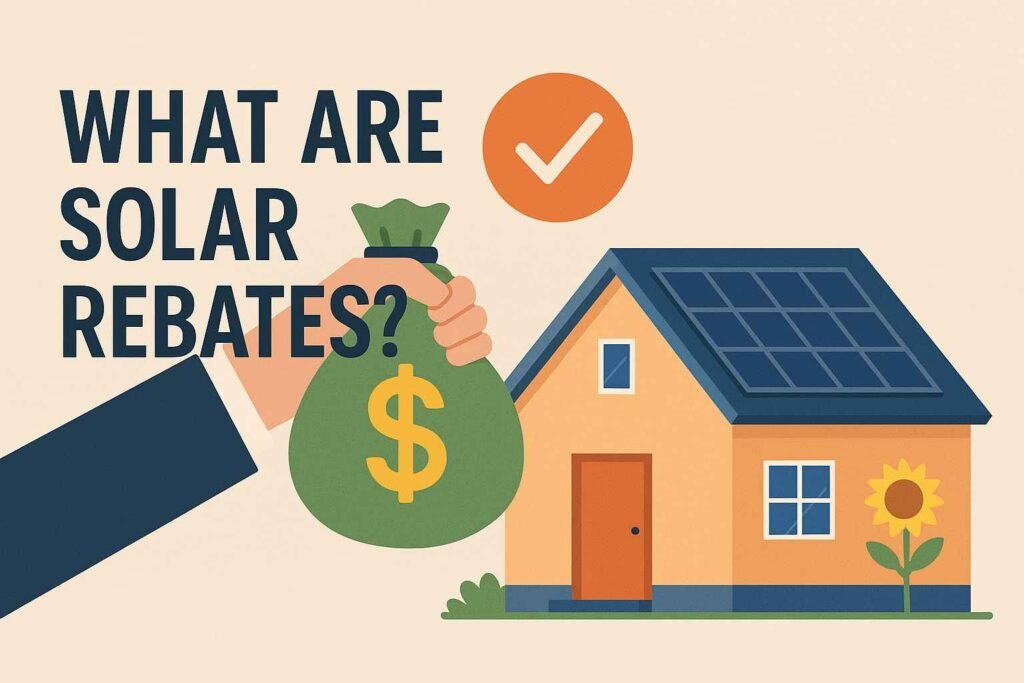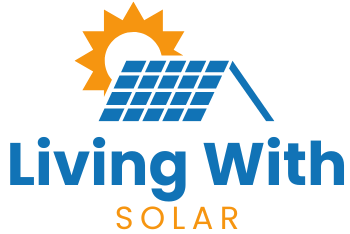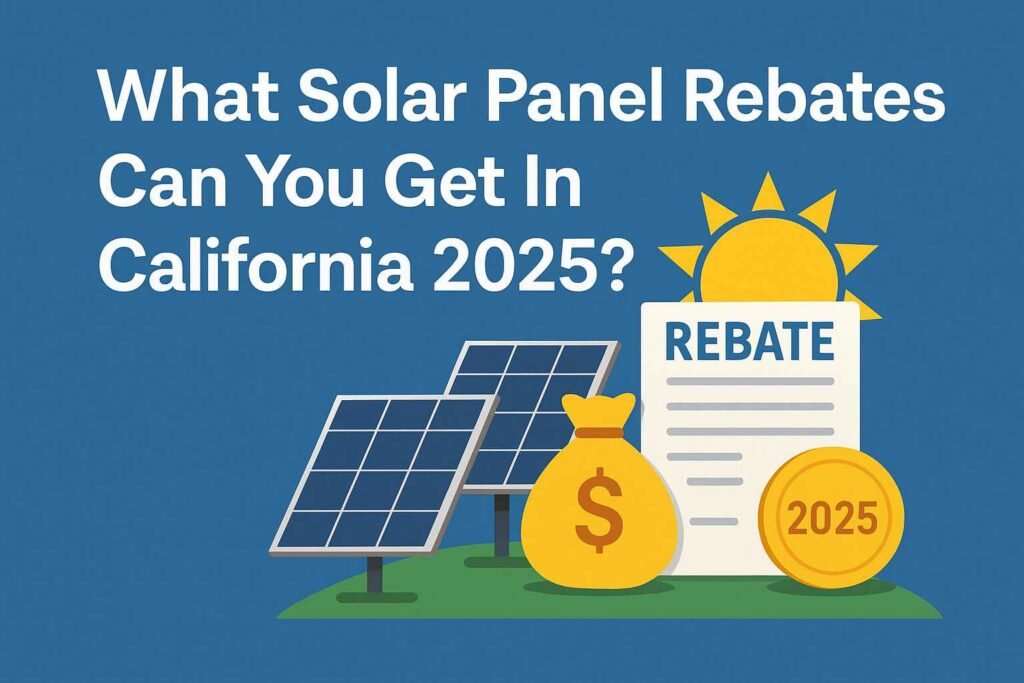Considering a solar installation in California? Good call! When it comes to solar power, the Golden State is a really big deal. Although some things have changed recently, there are still some killer deals to be had that can save you a significant amount of money on solar panels.
This means things like the federal solar tax credit and other local programs. This post will break down what’s available to you, especially if you’re after a solar panel rebate in California.
What Solar Incentives Can You Get in California?
In California, residents can take advantage of a variety of solar panel rebates and incentives that can drive down the initial solar installation cost.
| Incentive Type | Description |
|---|---|
| Federal Solar Tax Credit (ITC) | Take 30% off the cost of your solar system through a federal tax credit. Previously 26% in Tennessee and elsewhere, now 30% in California for 2024. |
| SGIP (Self-Generation Incentive Program) | Get rebates for adding a solar battery to your system, including popular options like the Tesla Powerwall. |
| Property Tax Exclusion | Installing a solar system will not increase your property taxes — a major cost-saving benefit for homeowners. |
| Net Energy Metering (NEM 3.0) | Receive credits on your utility bill for sending excess solar energy back to the grid. Designed to support self-consumption and reduce utility reliance. |
| Local Utility Rebates | Additional rebates may be available through local utilities like LADWP, PG&E, and SCE, depending on your location and installer. |
When combined, these rebates can reduce the average solar installation cost in California from ~$20,304 (before incentives) to around $14,213, depending on the system size and installer.
Why California Is a Top State for Solar Rebates

I have been reading a lot about this lately, and it is clear California is very impressive when it comes to solar energy. Even with some recent shifts in policy, the state gets an enormous amount of its power from the sun, and there are still plenty of good reasons why the Golden State is a great place to invest in solar. With the solar rebate programs, CA tax credits, and funding opportunities that are available, you can see why many homeowners are being hard pressed to make the change.
And, in my experience, although California’s incentives may not be as lucrative as they once were, the dollars and cents of solar are still overwhelmingly in favor of the decision to go solar. It’s not just that one big rebate; it’s about how all the different levels of industry support and industry growth fit together to make solar make sense.
Why California Is A Solar Energy Leader

I have always been impressed by how California manages to be ahead of the curve for things, particularly when it comes to renewable energy. It’s not just blind luck: There are some very good reasons for the Golden State’s dominance in solar. Clean power and progressive policies have really paved the way for California to be a leader in solar.
First, the state is sunny, which seems obvious but is obviously a big factor. The more sun, the greater the possibility there is for solar. But it’s about more than just the weather. The state government has long championed solar, enacting rules and programs that make it easier and more attractive for people and businesses to adopt solar power. This means things like aggressively setting ambitious goals for renewable energy and incentives that, even with some recent tweaking, make it a smart bet to install solar panels.
“I don’t think California is just lucky to be at the top of the solar pack. It’s part natural advantages and part a sustained effort from policymakers to make clean energy a priority. It has been the perfect environment for solar to really thrive, helping everyone from homeowners to global corporations that seek commercial solar solutions.”
– Sophia Green
A big part of that is the scale of California’s economy and population. With all these people and businesses, there’s a massive need for electricity. Solar power’s ability to meet that demand reduces dependence on fossil fuels, while also making the energy grid more resilient. And all that demand means there’s a big market for solar companies, which spurs innovation and makes solar technology more available and affordable over time. It’s a pretty nifty cycle when you stop to consider it.
- California is getting fewer cloudy days, and that’s great for solar panels.
- Policies have been developed by the state government in order to clarify and promote solar energy.
- It has a big market because of the state’s population and economy.
- Solar technology has always moved the fastest where it was needed most, in California.
What Are Solar Rebates?

when I first started researching solar, the word “rebate” was plastered all over the damn place and to be quite honest, it was very misleading. In simple terms, solar rebates are financial incentives created to make it more appealing for homeowners and businesses to convert to solar power. Think of them as a courtesy payment from the government, or from your utility company, or from a non-profit, as a reward for you spending money on solar panels. It’s not money for nothing, but it does help to defray initial solar panel setup expenses.
These discounts are offered in a variety of ways. With some, you receive it as a direct payment; others give you a credit on your utility bill, while still others are a deduction in your property taxes. The goal is to reduce the cost and improve access to solar, driving the adoption of clean energy more rapidly. its a win—win: You cost less, we have a healthier green ecosystem.
“These programs are, I’ve learned, often initiated to fill some predetermined activity target, like lowering fossil fuel use or cleaning up the air. They can also be a means of supporting economic growth by generating jobs in the renewable energy industry. When you stop and think about it, it’s a rather clever system.”
– Sophia Green
How Do Solar Rebates Work?
How, then, do these rebates work? It’s not always as straightforward as buying panels and receiving a check. There’s often an application process. You may have to complete forms, submit evidence of purchase and installation, and even have a visit from an inspector. The steps to do this will depend on which program you are rebating from.
There are first things you’ll need to figure out: which rebates you qualify for. This can vary based on where you live, your income, and what kind of solar system you are installing.
After that, you will usually buy and install your solar energy system. Most rebates require the system to be installed by an accredited professional.
Once installed, you will apply it to the specific program administrator. This typically requires the customer to submit documents, including invoices, permits, and proof that the system is operating.
Finally, provided your application is approved, you’ll get the incentive as a direct payment, a credit, or a tax refund.
Start the record-keeping early, from your initial research to the final installation. That should definitely make the app run a lot more smoothly.
Who Offers Solar Rebates?
There are a few different places where you can get solar rebates. It’s not one big pot of money. Here’s a look at the key players:
- Federal Government: The most common federal incentive is the solar tax credit, which is not in the form of a true rebate; instead, it is a big tax break.
- State Governments: Numerous states, including California, offer state-level incentives to adopt solar. These two can be hefty.
- Local Utility Companies: Your local utility company could provide rebates for its customers. These are often crafted to alleviate some of the burden on the grid during peak hours.
- Non-profits: In some cases, non-profits, or community groups, provide grants that often focus on specific projects, like solar grants for low-income families.
Each of these institutions has its own rules and membership requirements, so it can be worthwhile to do a bit of research to see what options are out there in your area. In some cases, a solar installer rebate application can also be managed by your installer, which can simplify things.
Types of Solar Rebates
When we refer to solar rebates, there is not just one type of financial assistance. Here are a few varying styles:
- Direct Cash Rebates: This is likely what people are most familiar with. You put in solar, you put in, you apply, and you get a check back for whatever percent or dollar amount that it is.e
- Performance-Based Incentives (PBIs): These payments, known as performance-based incentives (PBIs), are based on the electricity your solar system produces. The more power you generate, the more you make over time.
- Tax Credits: Not a direct rebate, but tax credits lower the amount of income tax you have to pay. A case in point is the federal solar tax credit.
- Property Tax Exemptions(d): In some locations, installing solar panels could make your property more valuable, but these exemptions keep your taxes from increasing because of this.e
- Sales Tax Breaks: In certain states will be let off paying sales tax on your solar equipment, lowering the upfront cost.
If you understand what’s what, you can work out the overall monetary value you could accrue. It’s not only a question of the sticker price, but also of long-term savings and incentives.
California Solar Rebates 2025 (the future rebates for the California solar panels)

I’m sure a lot of folks are curious about this news and what kind of solar credits 2025 will bring to California. California used to have a bunch of statewide solar panel subsidy California programs – but the times, they are a-changing. Don’t get me wrong; it’s still a fine place to go solar, but the target has moved. Now, it’s mostly down to specific programs and local utility incentives rather than general, statewide rebates. I’ve been researching this topic quite a bit, and here’s what I’ve dug up available right now.
Self-Generation Incentive Program (SGIP)
This one is a game changer, especially if you’re considering adding a battery to your solar setup. SGIP is a program to encourage people to install energy storage systems. It’s not targeted specifically at solar panels themselves, however, but at batteries that would accompany them.
That means you can receive a rebate for every kilowatt-hour of storage capacity you install. The amount you receive can vary greatly, depending on your income and where you live. For example, if you’re in a high fire-threat area or are eligible based on some other low-income criteria, you could receive a much larger rebate. It’s something worth exploring if you’re thinking about energy independence.”
DAC-SASH (Low-Income Program)
This initiative is only for low-income families that live in distressed communities. It’s known as the Disadvantaged Communities Single-family Affordable Solar Homes (DAC-SASH) program. It’s meant to bring solar power to people at all income levels, not just the wealthy.
I believe it’s an incredibly important program because it helps to ensure the benefits of clean energy are broadly shared. If you earn enough and live in an eligible area, you may be able to receive substantial assistance with the cost of your solar installation. So every household gets a shot at saving money on their power bill and helping the environment.
Local Utility Rebates (PG&E, SCE, SDG&E)
While rebates might have changed at the state level, your local utility company may still provide incentives. There have been various programs that have come and gone. For instance, you could see a PG&E solar rebate or an SCE solar discount.
It’s all going to depend on your location and your utility at the time of things. These aren’t always monstrous, but every little bit helps, right? I always tell people to look up your utility directly because these programs can change, and they’re very localized. It just feels so special finding a hidden gem sometimes.
“I’ve also learned that keeping abreast of these local, targeted programs is key. The solar incentives landscape is constantly changing, and what was available last year may not be available this year. It’s not always about one big, monolithic program, but a bunch of small, targeted incentives that can add up to real savings for homeowners.”
– Sophia Green
The Federal Solar Tax Credit For California Residents

So, I decided to investigate this whole solar situation, and one of the most talked-about things is the federal solar tax credit. It’s not even a California thing so much, but it’s a big deal for anyone in California considering going solar. At its most basic, it is a tax credit from the federal government to help defray the cost of installing solar panels on a home. This is a hefty credit that can significantly reduce the cost of your solar system.
It’s known as the Investment Tax Credit (ITC) and is equal to 30% of the total cost of your solar installation. That covers the panels, the inverters, mounting, and even the labor to install it all. It’s not a bad deal, and anyone in the U.S.A. who has bought a house and installed solar panels is eligible. And the neat thing is, if your tax liability isn’t high enough to use the entire credit amount in one year, you can carry over the excess credit to subsequent tax years. That’s a huge relief for people who might not have a fat tax bill immediately.
I’ve seen some numbers bandied about, and it means the average solar panel system in California might qualify you for a tax credit of around $5,400. But, of course, the number can go up or down a lot depending on the size of your system.
| System Size | Estimated Cost | Tax Credit (30%) |
|---|---|---|
| 4 kW | $15,360 | $4,608 |
| 6 kW | $23,040 | $6,912 |
| 8 kW | $30,720 | $9,216 |
“I believe it’s a good point to keep in mind that this is not a cash refund. It’s a credit that lowers the amount of income tax you owe. So if you owed the federal government $5,000 in taxes, but you have a $4,000 solar tax credit, you would pay $1,000 in taxes instead. If your credits exceed what you owe, you can carry the excess forward. It’s one of the simplest ways to save money.”
– Sophia Green
You can file for this solar tax credit in California by filling out IRS Form 5695 when you add it to your annual tax return. You can take the credit in the year your solar installation is finished. It pretty much covers all the costs of putting in solar panels or even home battery storage.
Just to be clear, it doesn’t apply to things like structural upgrades to your roof that are purely aesthetic, and which have no bearing on producing energy. What’s more, if you’re investigating solar financing choices, some lenders may even require you to apply the value of this tax credit to your solar loan within 18 months to keep your monthly payments low.
It’s something to think about for when you’re dreaming up your solar setup. And speaking of eligibility, bear in mind that programs such as DAC-SASH eligibility are different from this federal credit based on the low-income household.
How to Get Solar Panel Rebates in California
Pursuing the solar panel rebate California offers can be something of a maze, but I swear you’ll be glad you did. It’s not just a matter of finding the right programs, either: No matter how right they feel, you still have to stay on step. I’ve found that patience and attention to detail are key here. You don’t want to lose money that is due to you because of a simple oversight.
How to Apply Step-by-Step
When I decided to go solar, I looked up every program that existed. It’s not just the big one, like the SGIP rebate in California, that you want to know. There are frequently local utility rebates, too, which can add up. Once you know which rebates you’re eligible to get, the applications typically come in a similar form:
- Eligibility: The very first thing I do is to confirm the eligibility requirements of any rebates. Some are based on income, others on the kind of system you install or, conceivably, where you live. This is the single most crucial first step for preventing lost time.
- Collect Documentation: Now comes the boring part. You’ll want everything from proof of being a homeowner to detailed system specifications. In general, I make a folder (or virtual folder) and keep everything organised in there.
- Apply The Application: Many of the applications today are online, which is great. But some still call for sending in forms. Every time, I make sure every box is checked and every required document is attached before submitting it or dropping it in the mail.
- Follow Up: Don’t just send and forget. I always follow up 1 or 2 weeks later to make sure it has been received and check to see if my application was respectfully declined. And while they may need more information at times, being proactive can help speed things along.
Seeing the process from beginning to end is super important. It’s not just a matter of getting the panels on your roof; it’s also a question of making sure you reap all the financial benefits. Every little bit helps make the investment more affordable.
Documents & Deadlines Needed
This can be a little bit overwhelming, but it is vital. You’re going to need a pretty standard set of documents for most rebates. I mean things such as your utility bills, property tax statements, and detailed invoices from your solar installer.
For example, for how to apply for the solar rebate, you will often be asked for evidence of installation of the system, and also, in some instances, details of energy production. There are also a lot of deadlines. I’ve seen people who lost out because they didn’t hand in their paperwork in time. Make sure to always note these dates on your calendar to plan to get your applications in with plenty of time to spare.
Partnering With a Certified Supplier
Secondly, and likely most importantly, the best piece of advice I can offer. Picking a certified installer not only ensures a good installation, but it’s makes the rebate process easier. A qualified installer will know all the local and state rebate programs. They can often assist with the paperwork, helping to make sure everything is filled out correctly and transmitted on time.
They’re also normally the people who supply the required information about your system. I would suggest that you always ask the potential installers whether they are experienced in rebate applications and if they help with it at all. It will save you headaches later. Find a good installer It involves a good amount of research, but finding a dealer is the most important step to prepare for solar.
Other Incentives for Going Solar in California
Besides the rebates and tax credits, there are a few other reasons California makes going solar a smart idea. I’ve discovered that these add-on programs are another way to help seal the deal, particularly when you examine the longer-term rewards.
Net Energy Metering (NEM)
Net Energy Metering, or NEM, is a biggie. This is basically how you get credit for any excess electricity your solar panels generate and send back into the grid. The rules have changed slightly with NEM 3.0, but you can still export power and offset your electricity bill.
This means you’re not only consuming solar power but are then potentially being paid for the surplus power you create. It encourages you to right-size your system and think about when and how you use energy. I always ask people to consider/evaluate how much power they consume at night vs how much power they consume during the day, because that determines how much you save with NEM.
“And despite the new NEM rules, the ability for homeowners to send any excess power back to the grid and get a credit for it is still a very powerful financial advantage. It’s all about maximizing your self-consumption and minimizing what you have to pull from the utility.”
– Sophia Green
Battery Storage Incentives
- Here, the plot gets tasty, especially with NEM’s new rules. Since exporting power at specific times is less valuable, you might need to consider battery storage as essential for getting the most out of your solar investment. There are some California solar programs specifically to promote battery uptake. Those incentives help defray the cost upfront of a battery system, making it less expensive to store your solar generation for use when the sun is not shining. I’ve known many of my friends to go for batteries, and they all report a sense of peace knowing that they have power even when there’s an outage. It’s a game changer for energy independence.
- Self-Generation Incentive Program (SGIP): I brought up SGIP earlier for solar overall, but the program is especially good for battery storage. It offers incentives for installing energy storage systems; the rebate levels can depend on things like the size of your system and whether you are in a high-fire-threat area or a low-income community. It’s one of the primary solar incentives for battery storage that I study.
- Demand Response Programs: Some utilities have programs where they pay you for the privilege of tapping into your battery during busy peak demand times. That’s a win-win: you help shore up the grid, and you earn some extra money.
- Resilience Value: In regions that are more susceptible to blackouts, there might be enhanced value in arming the grid with battery-based resources. These are , however, usually aimed at certain communities or situations.
Local and Municipal Programs
Be sure to check with your city or municipal utility, too! Buying a home for the first time can be an overwhelming adventure, and numerous big state and federal programs receive the most attention from prospective homeowners, even though there are plenty of smaller, more localized programs that may provide even more benefits.
Those could be property tax breaks for solar installations, low-interest loans, or even baby grants. I always suggest a quick Google search for “solar incentives [your city/county name]” because you never know what kind of hidden gems you may stumble upon. These programs often change, so it’s worth checking back regularly.
Frequently Asked Questions
Why is California the top solar state?
California is a leading state for solar power, since it gets a lot of sunshine, it has relatively high electricity prices, and its government has supported strong pro-solar policies for more than a decade. These are reasons it’s a great place for homeowners to go solar.
What do solar rebates mean?
Solar rebates are discounts or money back you can receive when you make a solar power installation. They serve to reduce the upfront cost of solar energy and make it more affordable.
Are there still decent solar credits available in California in 2025?
Yes, even as California has altered some of its solar rules, there are still ways to save. These are state programs that serve targeted groups united by a common interest, such as local utility company deals and an enormous federal tax credit.
What is the Self-Generation Incentive Program (SGIP)?
Money back is available under the Self-Generation Incentive Program (SGIP) for installing a battery alongside your system, which allows you to store extra energy. This is extremely useful for providing power during an outage, and for drawing less electricity from the grid, generally.
What assistance does the DAC-SASH program provide for low-income families?
The DAC-SASH program aims to get solar panels into the hands of people in low-income areas. It offers incentives to bring solar to families who might not otherwise be able to afford it.
What is the federal solar tax credit?
You can receive 30% of the total cost of your solar system back as a credit on your federal taxes with the federal solar tax credit. This is a major discount that will benefit anyone purchasing solar panels in the U.S.





